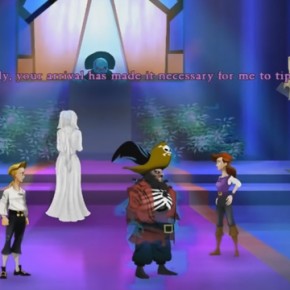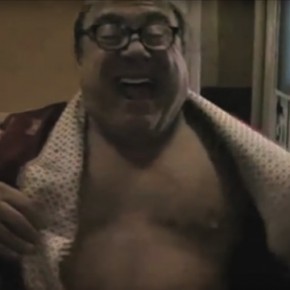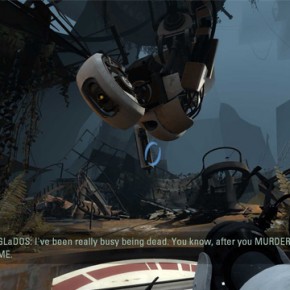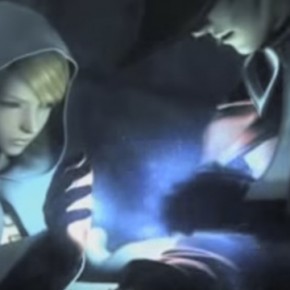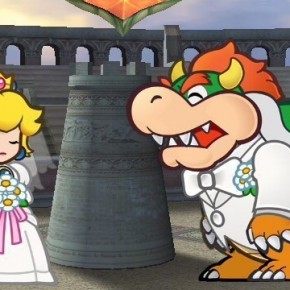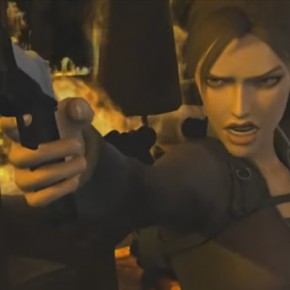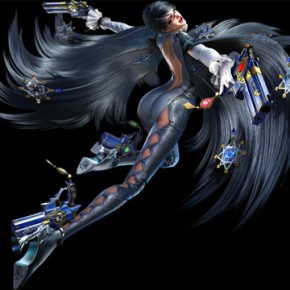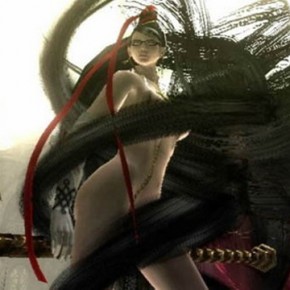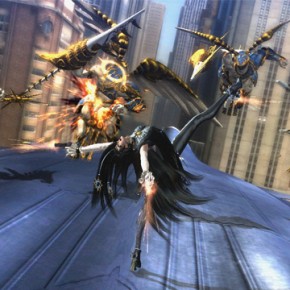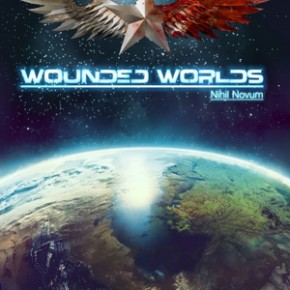-Ryan J. Hodge
For someone who enjoys a great story, is there anything better than a narrative that engages you from the very start? Imagine a world so rich you can almost smell the scents in the air, a delivery so clever it forces you to think in a way you never thought you would. I’m Ryan J. Hodge, author, and I’d like to talk to you about…Video Games.
Yes, Video Games. Those series of ‘bloops’ and blinking lights that –at least a while ago- society had seemed to convince itself had no redeeming qualities whatsoever. In this article series, I’m going to discuss how Donkey Kong, Grand Theft Auto, Call of Duty and even Candy Crush can change the way we tell stories forever.
What Videogames Teach Us About Writing Female Characters
It is tempting to say that games have made great strides in their portrayal of female characters since the early days of rescuing Pauline, Princess Peach, & Zelda but, in fairness, there has been a wide array of female (or female identifying) characters ranging outside the role of ‘damsel in distress’ since even the 8-Bit era. Some of the most readily identifiable of these include Samus Aran (Metroid), Carmen Sandiego (Where in the World is Carmen Sandiego?), Selan (Lufia II), Terra (Final Fantasy VI), and so on.
While inarguably outnumbered by male counterparts (particularly in playable roles), there is still much that games can teach us about writing for female characters.
It is no secret that part of the challenge in writing compelling female characters is to reconcile their character traits with the society in which they exist. There is a temptation to suggest that the best practice for writing a ‘good’ female character is to simply write her as one would a male character and merely replace the pronouns. However not only does this conflate the ‘male’ template as a sort of ‘default’ model, it can also be unnecessarily limiting the character’s scope. Yet, there is an understandable reluctance to dwell over-much on the fact that a character is, indeed, female when the story doesn’t call for it.
In this matter, videogames may offer some intriguing insight. The Secret of Monkey Island (LucasArts, 1990) has the player assume the role of Guybrush Threepwood, an earnest-if-bumbling man of action. Over the course of the game, Guybrush is burdened with several challenges to rescue his beloved Elaine from the ghost pirate LeChuck. However, unbeknownst to him, Elaine has already enacted her own escape plan. Unfortunately, Guybrush’s fumbling attempts at a rescue actually foil her own aims to escape.
This is an exemplary demonstration of the ‘tunnel vision’ that can be generated by assuming that one’s self is the sole actor against a particular adversary (and vice-versa) and thus creates and interesting avenue for characters (particularly female characters) to explore that range outside their presumed roles in the story. It simply did not occur to LeChuck that Elaine was a legitimate flight risk, so he focused most of his efforts against Guybrush.
The possibilities that this context presents are littered throughout fiction. Where so-called ‘powerful’ men believe they are the ones in charge and are the masters over their ‘lessers’, a woman in opposition may side-step that presumed authority in ways males in opposition simply can’t. Consider Basic Instinct (1992, Film) in which the female lead, Catherine, is the police’s only suspect (and is, indeed, the perpetrator) of a brutal murder. Despite their suspicions, Catherine is able to confound their investigations via a mixture of “it was too obvious to be me” arguments and seduction of the detectives in question. Conversely, it would be inconceivable for a male suspect to even make the attempt.
There is real-life precedent for such actions as well, Mata Hari (A German spy posing as an exotic dancer, Codename: H-21) seduced several military officers and politicians across several Allied nations. Though her status as a celebrity had waned (her last performance was in 1915), she was able to rest on her laurels as a ‘harmless’ erotic entertainer until her trial and execution in 1917.
It should be stressed, however, that seduction and/or presumed frailty is not the only means of illustrating this point. It is well understood that the most common and obvious means of prosecuting conflict is via direct engagement with destructive weapons. To wit: if there’s something in your way; shoot it, stab it, or blow it up until it isn’t. Given that, historically, those who would engage in such activity were overwhelmingly male, it isn’t a stretch to suggest that this can be identified as a characteristically masculine activity. However, there is a title wherein the player surmounts countless murderous adversaries without firing a single lethal shot.
Portal (Valve, 2007) has the player assume the role of Chell, a female test subject in an abandoned research station. She is pitted against a murderous AI, GLaDOS, and her only means of escape is a device called a ‘portal gun’. This ‘gun’ is not a weapon in the traditional sense. To fire it directly at an enemy will do nothing, however it can be used to generate a quantum wormhole on certain surfaces. In the final battle with GLaDOS, Chell is able to have the rampant intelligence –in effect- kill itself. Again, the Player Character cannot directly damage GLaDOS, but she can re-direct the missiles the intelligence fires at her to hit GLaDOS’ core mainframe.
Of course it is near impossible to have a discussion about writing a character, specifically as they relate to their gender, without discussing gendered social roles. Often, this ‘discussion’ places the role of the female as that of an aspirant, one who wants to do ‘as the boys do’ (as distinct from ‘what girls do’). A prime example of this is the animated Disney film Mulan (1998) wherein our heroine chafes under the stifling pageantry aligned with the culture of ‘match making’ and poses as a man to join the army instead. While there is nothing inherently flawed with this dynamic and, in itself can lead to some interesting narrative situations (In the original Sui Tang Romance [c.1675], Mulan’s deception is discovered not by any man but by fellow female warrior Xianniang), dwelling on this can create an air that femme roles are somehow inferior to masculine roles, rather than complimentary.
Considering Ubisoft’s Prince of Persia (2008) for example, we can see how traditionally masculine and femme roles work as compliments to each other. The ‘Prince’s’ role is primarily fighting and navigation (what might be expeditiously compared to soldiering and exploring) wherein the Elika’s (female co-lead’s) role is to support the Prince in combat and puzzle solving. Though she assists in fights, she is not a primary combatant and no headway can be made without the Prince’s role in the conflict. However, the Prince’s many victories would all come to naught were it not for Elika’s unique ability to ‘heal’ the blighted lands within the game.
Indeed, complimentary roles have been a staple in games since the earliest days. The first Final Fantasy (Squaresoft, 1987) tasked players with striking a balance between combat and support roles as a means to surmount the game’s many challenges. An offense-heavy team is great for mowing down enemies, but will quickly exhaust itself without supplies. Support-heavy teams are able to endure quite a bit of abuse, but will make little headway against enemies. In this fashion, it is easy to see how complimentary roles can actually be superior to homogenized roles.
In the original La Belle et la Bête (1756 Novel; more commonly as Beauty and the Beast), Jeanne-Marie Beaumont explores how man’s more bestial qualities are not only soothed by the feminine touch but are, themselves, aimless and unmoored without it. Disney’s 1991 film version of the tale further juxtaposes this idea with the addition of the Gaston character who is, in every measurable sense, the stereotypic masculine ‘action hero’. In the usual tale of ‘maiden captured by foul beast’, we’d expect the hero to slay the brute and rescue the gushingly ‘appreciative’ young miss. However, that’s not what happens here. Instead, whatever threat the beast posed to Belle’s village –real or imagined- is dispelled not through force of arms, but through tenderness and understanding.
While there is no need to shrink from femme gender roles in narrative; one must take care not to define their characters by their roles or be too lax in exploring the personality traits therein. One of the more interesting examples of this can be found in Square Enix’s Tomb Raider (both the 1996 and 2013 titles).
In the 2013 title (a prequel to the 1996 game), young Lara Croft is a research assistant stranded on an island filled with murderous castaways. She initially takes this about as well as can be expected; hesitant and tottering when entering combat, pleading and terrified in the face of capture. As the game progresses, however, Lara is afforded the opportunity to ‘meditate’ on her harrowing experiences, surmising new techniques and approaches to survival. At length, in the late game she roars challenges at her enemies; taunting and cursing them. Her terror has been replaced by determination. When the events of the 1996 title come into play, Lara is a being of supreme confidence. She feels no real sense of betrayal when enemies and allies alike toy with her, she has come to expect this as part of the ‘business’ and parries these concerns with an almost machine-like indifference.
What’s interesting is that this highly psychological approach to her character is quite different to how one might approach Indiana Jones. In The Last Crusade (1989 Film), Jones (age 13) is nearly indistinguishable from Jones (age 39). The older Indiana is more experienced, sure, but both possess the same sense of bravado and love of adventure. In this, we have a prime example of how the saturation of male heroes in media may have been a detriment to the exploration of character, where an injection of heroines may just be the cure. Plainly, Lara’s journey as a character is far more interesting to watch than Jones’; even if both of their adventures are every bit as compelling in scope.
Still, however, this is very much not at all to suggest that a character cannot be interesting without being a badass plain and simple. Take the indomitable Bayonetta for instance:
Bayonetta is the eponymous character in a series of videogames (2010-2014) that are many things, but they are first and foremost extremely interesting and incredibly badass. What draws many to Bayonetta as a character is the reckless abandon to which she greets all of life’s adversity. The main point of her games, in fact, is not just the dispatch of foes but to thoroughly dispatch them. Players are rewarded for combination and variations in attack strategies which, in turn, unlock Bayonetta’s witchy hair powers.
While some might balk at Bayonetta’s blatant sexualization, as a character it is arguable that it makes her more subjectified than objectified. The use of her powers are for no one’s pleasure but her own and, indeed, nothing pleases her more than to use her powers to best her enemies. To wit, her body isn’t exploited by the developers (she’s always strategically covered up in just the right places) so she’s always in complete oneness with her own self. Indeed, this is arguably more attractive than any amount of nudity that might have been exploited anyway; as her character is so effervescing with personality, whipping her absurd ‘gun heels’ around while cackling like a maniacal in-patient, that the lack of a laissez faire sexual component would only cheapen her. She’s Gone with the Wind’s (Margaret Mitchell, 1936) Scarlett O’Hara… if Scarlett O’Hara was a lot more fun.
So the next time you pick up the controller, don’t be afraid to get in touch with your feminine side. Who knows? It just might make you a better writer.
Ryan J. Hodge is a science fiction author and is a Games Industry veteran. His latest book, Wounded Worlds: Nihil Novum, is available now for eBook & Paperback.
You can now follow Ryan on Twitter @RJHodgeAuthor


